UpFront: News in Brief
All UNSW's top news stories, from quantum computing dollars to a warm welcome for new Deans and dignitaries.
All UNSW's top news stories, from quantum computing dollars to a warm welcome for new Deans and dignitaries.
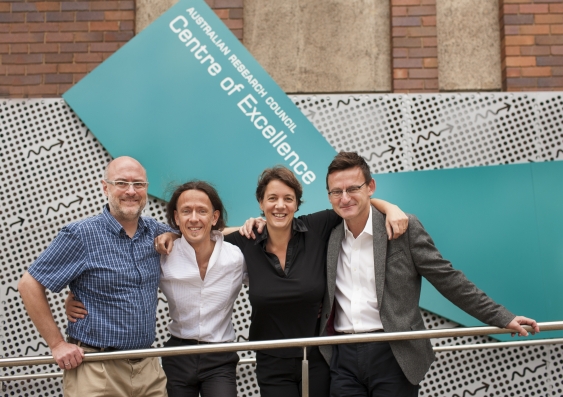
UNSW’s world-leading quantum computing researchers have received a major injection of funds with $46 million pledged to their work by Australia’s corporate sector and the federal government.
The UNSW-based Australian Research Council Centre for Quantum Computation and Communication Technology (CQC2T), headed by Scientia Professor Michelle Simmons, is leading the race to build the world’s first quantum computer in silicon, a technology the government believes will “transform Australian and global business”.
In December, Prime Minister Malcolm Turnbull promised $26 million as part of his government’s $1.1 billion National Innovation and Science Agenda.
Soon after the announcement, the Commonwealth Bank (CBA) made an in-principle commitment of $10 million plus in-kind support, and Telstra followed suit with a $10 million pledge.
CBA chief executive Ian Narev said the bank intended to invest the $10 million over five years, adding to $5 million committed in December 2014.
Mr Narev said Professor Simmons’ trailblazing work was proof that “world-leading innovation can happen– and is happening – in Australia”.
“For innovation to thrive there must be collaboration between governments, research institutions, businesses and entrepreneurs,” he said.
Telstra chief executive officer Andrew Penn said: “The potential of quantum computing is significant for countries across the globe, and we are excited to be part of this important initiative.”
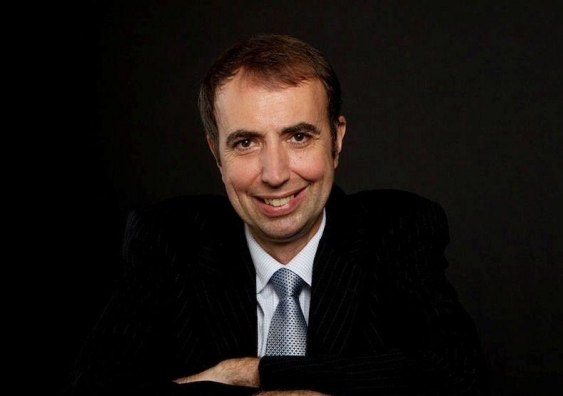
Professor Merlin Crossley
Renowned molecular biologist and Dean of UNSW Science Professor Merlin Crossley has been appointed Deputy Vice-Chancellor (Education).
He assumes leadership of the portfolio from Professor Iain Martin, who has been appointed Vice-Chancellor of Anglia Ruskin University in the UK.
A specialist in human genetic diseases and former Rhodes Scholar, Professor Crossley was appointed after an international search. He has been Dean of Science since 2010.
“Professor Crossley has an outstanding record as leader, teacher and researcher and has achieved great success as Dean,” said President and Vice-Chancellor Ian Jacobs. “As Deputy Vice-Chancellor (Education), Merlin will play a key role as part of the UNSW senior team delivering on our ambitious 2025 Strategy.”
Eminent in his field, Professor Crossley is an enthusiastic teacher and science communicator who frequently writes and comments on issues of science, education and policy.
Professor Crossley said he was honoured by the appointment and looked forward to the challenges ahead. “We have great teachers at UNSW. I look forward to working with them to make things even better,” he said.
Under Professor Crossley’s leadership, the Faculty of Science has flourished, with strong results in grants and research and a significant increase in student enrolments.
Deputy Dean Professor Peter Lovibond will serve as Acting Dean until a replacement for Professor Crossley is appointed.
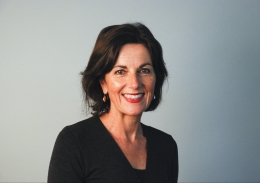
Professor Helen Lochhead
UNSW has welcomed architect and urban designer Helen Lochhead as Dean of the Faculty of Built Environment and is preparing to welcome Professor Susan Dodds as Dean of the Faculty of Arts & Social Sciences (FASS).
Professor Lochhead (pictured top right) takes over from Professor Alec Tzannes while Professor Dodds (right) replaces Professor James Donald in FASS.
Professor Lochhead comes to UNSW after serving as the Deputy NSW Government Architect. An Adjunct Professor at the University of Sydney, she has also taught at UTS and internationally at Harvard, MIT, Columbia University and the New York Institute of Technology.
A previous recipient of both Fulbright and Churchill Fellowships, she most recently completed a Loeb Fellowship at Harvard University, interrogating proposals and governance models for more resilient and livable cities.
“Helen’s strong professional career has been complemented by significant teaching and research experience at some of the top universities in Australia and overseas,” said President and Vice-Chancellor Professor Ian Jacobs.
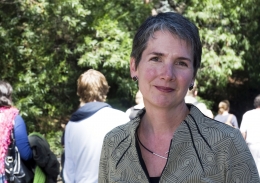
Professor Susan Dodds.
Professor Susan Dodds, a leading researcher in moral psychology, ethics and political philosophy, will take up her appointment as Dean of FASS in early April. Professor Eileen Baldry, who has served as Interim Dean since the departure of Professor James Donald in July 2015, will continue in her role until then.
Professor Dodds is currently Dean of the Faculty of Arts at the University of Tasmania, where she is also Deputy Provost. Among her many professional roles, she is the President and Chair of the Australian Council of Deans of Arts, Social Sciences and Humanities, and Chair of the Australasian Association of Philosophy.
“We are delighted to welcome someone of the calibre of Professor Dodds to UNSW,” Professor Jacobs said. “Apart from her leadership credentials, she has 25 years’ experience in higher education, and her research focus in political philosophy, bioethics and feminist philosophy puts her at the forefront of many of society’s most important public and ethical debates.”
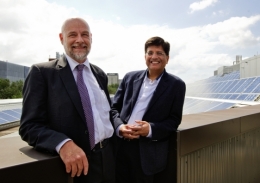
SPREE’s Richard Corkish with Minister Goyal on the roof of the Tyree Energy Technologies Building. photo Jenny Evans
India’s resources minister has called for greater research collaboration with Australia, saying local universities could play a vital role in rolling out low-cost energy solutions to the world’s fastest-growing major economy.
Visiting UNSW, Mr Piyush Goyal, India’s Minister for Power, Coal, New and Renewable Energy, said more effective and affordable energy solutions were required, stressing a one-size-fits-all approach would not work in his rapidly modernising nation of 1.2 billion people.
The minister was joined by a business delegation and officials from India’s ministries of Coal; New and Renewable Energy; and Petroleum and Natural Gas. All were interested in exploring partnership opportunities with UNSW’s world-leading photovoltaics and resources programs.
The group toured UNSW’s state-of-the-art Tyree Energy Technologies Building, home to the School of Photovoltaic and Renewable Energy Engineering (Spree). The Indian mining delegates experienced the 360-degree, 3D mine safety-training simulator developed by UNSW’s iCinema Centre and the School of Mining Engineering.
Minister Goyal said new technologies had to “scale up” in a way that was affordable if they were to succeed in the Indian context.
He said universities would be key to unlocking this challenge. “It starts from people of the two countries getting to know each other better; understanding each other, working together, and I’m sure that universities such as [UNSW] can play a very important role in that.”
UNSW ASPIRE has received $173,000 in seed funding from the federal government for a program to improve computer literacy in its partner high schools.
By the time they are 15 years old, students from disadvantaged backgrounds – particularly in rural areas – are at least 2.5 years behind their peers in science and mathematics, and computer literacy plays an essential part in this time lag.
The one-year pilot project aims to turn that situation around, by upskilling teachers and engaging high-school students in computer training.
“We’re hoping that by targeting students before they hit that critical age and boosting the fluency of teachers we can embed literacy within the school and over time, build those capabilities so vital to navigating the modern world,” says ASPIRE director, Dr Ann Jardine.
The literacy pilot will be run in two rural ASPIRE partner schools in 2017.
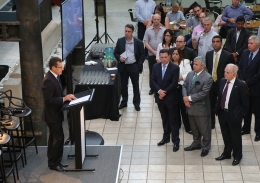
Ken Boal, vice president of Cisco in Australia, at the launch of Innovation Central Sydney.
High technology has been slow coming to agriculture, but a new centre being launched by UNSW and multinational tech company Cisco Systems will bring the power of networking, artificial intelligence – and even sensor-laden drones – to the farm gate.
Known as Innovation Central Sydney, the centre will focus on developing new uses for Internet of Things (IoT) technologies in agriculture as well as ‘smart cities’: from monitoring crop nutrition, soils, weeds and diseases using imaging sensors on drones, to bus shelters that stream data to smartphones and provide transport updates.
The centre will be based at Australian Technology Park, with a new innovation hub based at UNSW, the latter focusing on cyber security – ensuring that autonomous IoT devices are not hacked.
It is one of 10 such collaborative nodes around the world established by the US-based Cisco, whose hardware runs much of the internet.
Cisco estimates the market for IoT technologies to be worth US$19 trillion by 2020, with huge upswings in data traffic.
Launching the centre, Alan Finkel, Australia’s Chief Scientist, said IoT would soon permeate everyday life. “The Internet of Things isn’t just a refrigerator connected to the internet – it is deep, it is complex, and it is transformational.”
Mark Hoffman, Dean of Engineering at UNSW, agreed. “The potential applications of IoT are astounding. If you add computer chips, sensors and networking to anything – fridges, cars, bus stops, traffic lights, biomedical implants such as pacemakers and hearing aids – they can communicate with you via smartphones and computers. Your self-driving car navigates around traffic jams, your fridge can order milk online or the hospital can give you a call for a check-up.”
UNSW will be a key player in the centre and in IoT, Hoffman said: “We have about 1,500 students studying computer science and engineering – we have this incredible resource of really bright people who are very motivated, very entrepreneurial and they’re going to be the ones creating the industries of the future.”
The centre’s launch comes after the announcement of a new cyber security partnership between UNSW and the Commonwealth Bank, which will see $1.6 million invested over five years to develop a centre of expertise for cyber security education and research.
Known as the Security Engineering Partnership, it will help build Australia’s capacity to battle the rising menace of cyber intrusions, by identifying theft, malware attacks and a host of other online perils, and it will alleviate a critical shortage of cyber security skills for Australian businesses.
A new UNSW Security Engineering Lab will become a centre of expertise for education and research in the area. A Security Engineering stream within UNSW’s computer science degree program, with a comprehensive applied cyber security undergraduate curriculum, will be made available as a massive open online course, or MOOC. The streamalso includes support for PhD research tackling internet security issues.
– Wilson da Silva
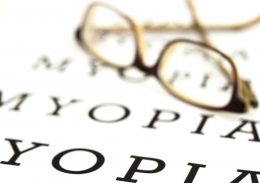
Image: iStock
More than five billion people will be myopic by the middle of the century, with up to one-fifth – about one billion people – at a significantly increased risk of blindness, a UNSW-led study shows.
The number of people with vision loss from high myopia is expected to increase seven-fold from 2000 to 2050, with myopia to become a leading cause of permanent blindness worldwide.
The study, by researchers at the Brien Holden Vision Institute at UNSW and the Singapore Eye Research Institute, is published in the journal Ophthalmology.
The authors attribute the rapid increase in the prevalence of myopia globally to “environmental factors, principally lifestyle changes resulting from a combination of decreased time outdoors and increased near work activities, among other factors”.
The findings point to a major public health problem, with the authors suggesting that planning for comprehensive eye care services is needed to manage the rapid increase.
“We need to ensure our children receive a regular eye examination from an optometrist or ophthalmologist, preferably each year, so that preventative strategies can be employed if they are at risk,” says co-author Professor Kovin Naidoo, CEO of the Brien Holden Vision Institute.
“These strategies may include increased time outdoors and reduced time spent on near-based activities including electronic devices that require constant focusing up close.
“There are other options such as specially designed spectacle lenses and contact lenses or drug interventions, but increased investment in research is needed to improve the efficacy and access of such interventions.”
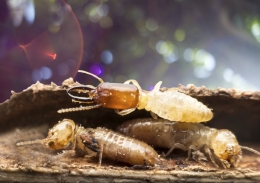
Image: iStock
Researchers have uncovered the evolutionary secret to why termites don’t bite off more than they can chew. Amy Coopes reports.
Termites might be known for their destructive powers, but it turns out they have innate restraint and an understanding of engineering that would earn the respect of a master builder.
UNSW researchers have discovered that the termite, Coptotermes acinaciformis, is able to distinguish load-bearing from non-load-bearing wood.
According to Dr Sebastian Oberst and Professor Joseph Lai from the School of Engineering & Information Technology at UNSW Canberra, Coptotermes, the ‘tree-piping’ termite, will first gnaw through areas that don’t support weight before moving on to load-bearing timbers.
The UNSW team and colleague Associate Professor Theo Evans from the University of Western Australia also found the canny insect will buttress weight-bearing walls with clay to ensure they don’t collapse as they feast.
“The ability to determine weight bearing in wood explains some of the patterns of termite attack in houses,” says Oberst.
“They usually eat the wood that is not load bearing first, such as door and window frames and floorboards behind cupboards and attack the strong load-bearing timbers such as joists and bearers later.”
The clay walls are built progressively so if the termites are disturbed and forced to abandon the wood they haven’t expended more energy than is strictly necessary.
It allows termites to access wood that would otherwise be off-limits, offering 700 times more energy than they expend in erecting the scaffold.
It is thought to represent an evolutionary leap from foraging to nest building.
The ability to detect load bearing is likely to have evolved in response to the scarcity of readily accessible wood for Coptotermes, a ground-dwelling mainland Australian species that builds mound nests and eats eucalypts.
“The problem for ground-living termites is most wood is not available to eat because it is in tree trunks that support the huge weight of the tree,” Oberst says.
“Eating the wood at ground level would cause the tree to collapse, and so crush and kill the termites.”
Once a load is detected, the termite switches from feeding mode to transporting clay, and continues to periodically sample the wood until enough clay has been added to disperse the load before continuing to eat, the researchers say.
Though not proven, they believe the load bearing is detected via their acoustic or vibration senses rather than physical or chemical methods.
The research, published in Scientific Reports, was supported by an Australian Research Council Discovery Project Grant.
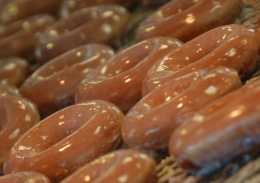
(Scott Ableman/Flickr).
If you thought you could get away with indulging in junk food only on the weekend, think again.
Bingeing on junk food over the weekend after eating well all week is likely to be as bad for your gut health as a consistent diet of rubbish, new research shows.
The human gut contains up to 100 trillion microbial cells that influence metabolism, nutrition and immune function. Disruption to the gut microbiota has been linked with conditions such as inflammatory bowel disease and obesity.
Now a study, led by UNSW Pharmacology Head Professor Margaret Morris, shows rats that “binged” on junk food for three days have almost the same gut microbiota as obese rats.
Morris’s team compared the abundance of microbiota in rats given continuous access to either a healthy diet or junk food with a third group cycled between the two diets – healthy for four days and junk for three – over 16 weeks.
The microbiota of the mixed diet rats was almost indistinguishable from rats fed solely on junk food. Both groups’ microbiota was significantly different from those in the rats fed a healthy diet.
“While these findings are yet to be replicated in humans, those who are strict with their diet during the week may be undoing all their good work by hitting the junk food over the weekend,” Morris says.
The study, whose findings were published in Molecular Nutrition & Food Research, was supported by funding from the National Health and Medical Research Council.
UNSW Canberra graduate Lieutenant James ‘Jimmy’ Haw will head to Oxford University this year to study Anthropology after being named the 2016 Australia-at-Large Rhodes Scholar. Lieutenant Haw is the second Rhodes Scholar from UNSW for 2016. Lieutenant Haw is serving in the Australian Regular Army as a Cavalry Officer. He intends to study a Master of Philosophy in Social Anthropology at Oxford with the aim of understanding the impact of military operations in the world’s tribal regions.
UNSW has partnered with universities across the state to offer support to refugees from Syria and Iraq who will be resettled in NSW over the next 18 months. The University will provide annual scholarships funded from investment returns on a $500,000 contribution to the Refugee Scholarship Fund. “We know education is key to unlocking potential, opportunities and jobs. Many refugees have been forced to abandon their studies and this support will enable them to rediscover and pursue their dreams,” Peter Shergold, NSW Coordinator-General for Refugee Resettlement, said.
UNSW has joined with Sydney FC to support the football club’s campaign in Asia in the 2016 AFC Champions League. UNSW President and Vice-Chancellor Ian Jacobs said the partnership built on longstanding ties between UNSW and Sydney FC through Football United, a development program for youth from disadvantaged communities. “Many of our 35,000 domestic students and 15,000-strong international student body enjoy watching football. Through this partnership we are opening up access to some of the best football in the country right next door to UNSW.”